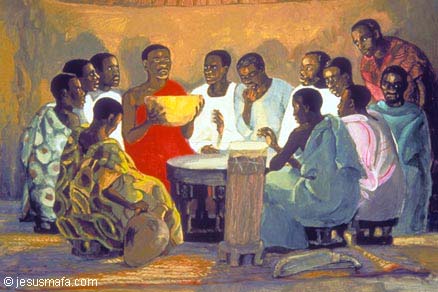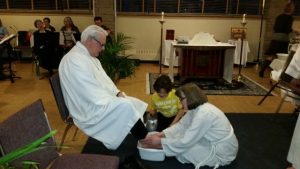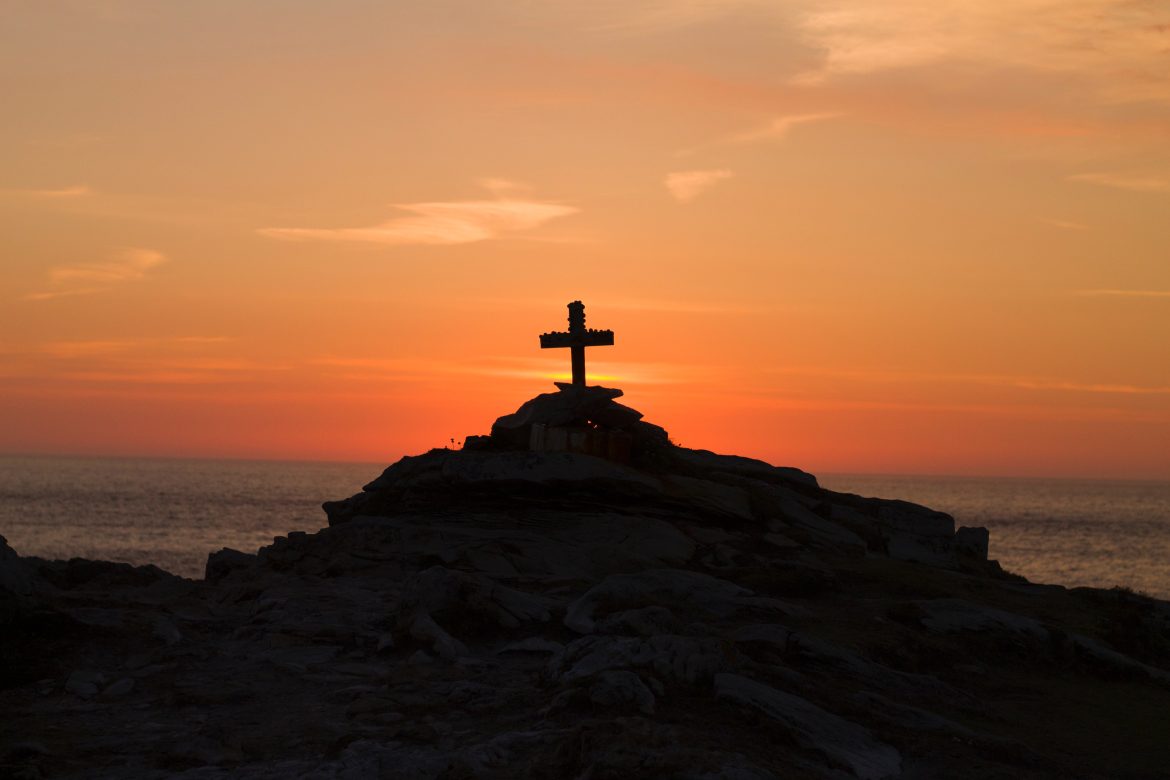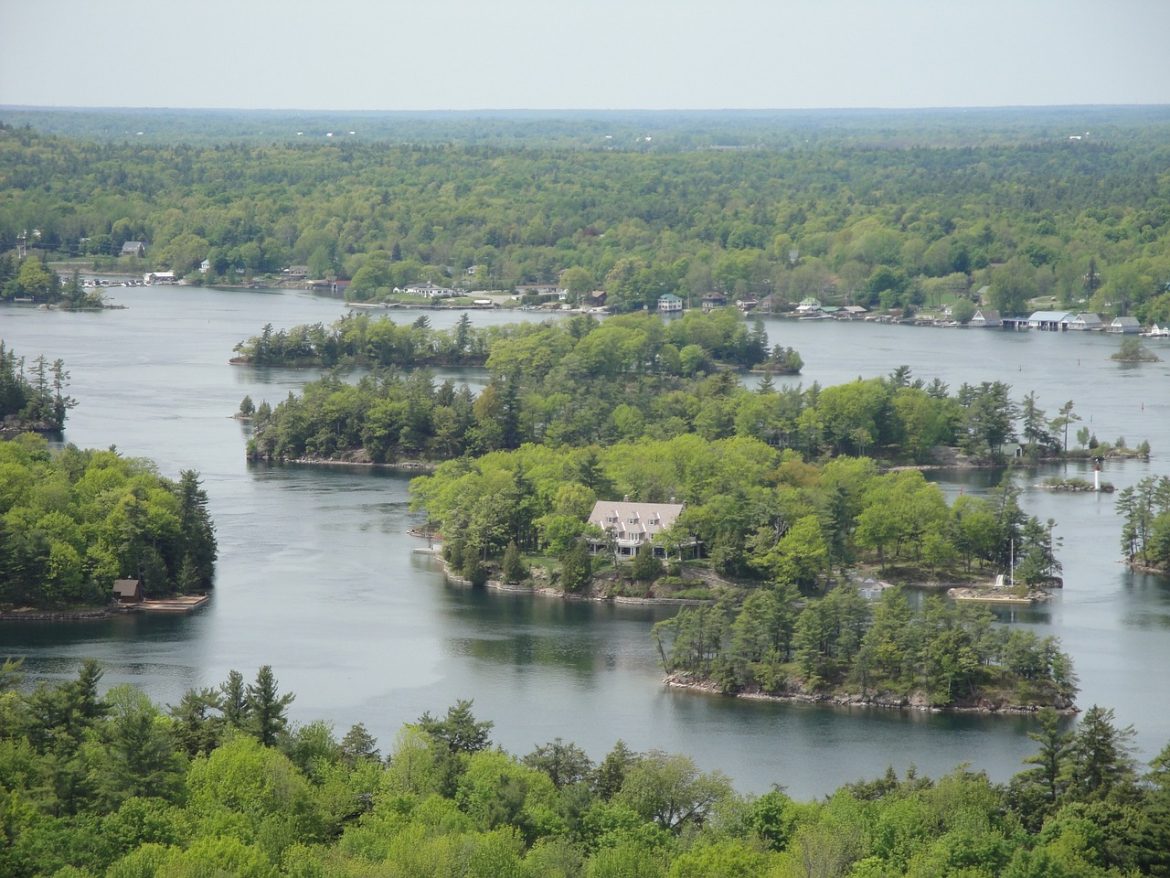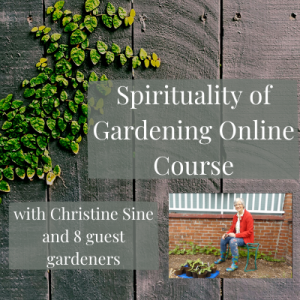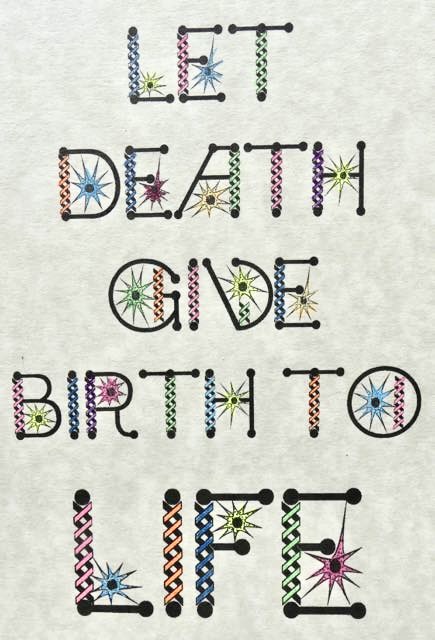Today’s post is an updated list of resources for Maundy Thursday, the day before Good Friday, which commemorates Jesus’ last Supper with the disciples and the institution of the Eucharist. Its name of “Maundy” comes from the Latin word mandatum, meaning “command.” This stems from Christ’s words in John 13:34, “A new commandment I give unto you. Love one another as I have loved you”. Many of us associate it with foot washing:
A rite performed by Christ upon his disciples to prepare them for the priesthood and the marriage banquet they will offer, and which is rooted in the Old Testament practice of foot-washing in preparation for the marital embrace (II Kings 11:8-11, Canticles 5:3) and in the ritual ablutions performed by the High Priest of the Old Covenant (contrast Leviticus 16:23-24 with John 13:3-5). The priest girds himself with a cloth and washes the feet of 12 men he’s chosen to represent the Apostles for the ceremony.
It is the oldest of the observances peculiar to Holy Week but seems to have attracted the least attention and I must confess creative suggestions were hard to come by. It has however become my favourite Holy Week observance.
For Celebrating At Home
- How to have a Maundy Thursday Liturgy at Home by MissioAlliance
- Maundy Thursday – 7 Churches at Home by Barefoot Abbey
- Stripping the Table by Building Faith
Free Maundy Thursday Resource
 Our own church, Saint Andrews Episcopal Church in Seattle hosts an Agape feast and foot washing, one of the most beautiful celebrations I have been to. We re-enact the Last Supper with a wonderful lamb feast, beautiful litany that intertwines scripture and prayer, have the opportunity to wash each other’s feet and then process upstairs to the sanctuary to strip the altar for Good Friday. They have kindly made the liturgy for this celebration available for FREE DOWNLOAD from the Godspace resource centre.
Our own church, Saint Andrews Episcopal Church in Seattle hosts an Agape feast and foot washing, one of the most beautiful celebrations I have been to. We re-enact the Last Supper with a wonderful lamb feast, beautiful litany that intertwines scripture and prayer, have the opportunity to wash each other’s feet and then process upstairs to the sanctuary to strip the altar for Good Friday. They have kindly made the liturgy for this celebration available for FREE DOWNLOAD from the Godspace resource centre.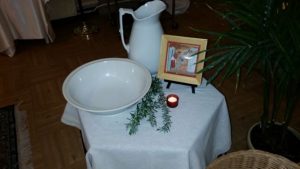
Footwashing
Foot washing has also taken on new significance for me in recent years as I reread two posts that have been contributed to my blog. Some of you might like to revisit these too.

I also love this post Replacing Holy Week – Towards a Public + Local Liturgy by Brandon Rhodes. and suggest that you also watch this video Brandon put together that spells our some of what they have done since then the concretize their practices. Parish Practices: “Re-Placing Holy Week,” with Brandon Rhodes .
Parish Practices: “Re-Placing Holy Week,” with Brandon Rhodes from Parish Collective on Vimeo.
Consider a Tenebrae Service
- One form of service you might like to consider for either Maundy Thursday or Good Friday is a Tenebrae service. I like this resource from the Presbyterian church that helps explain this.
- And an “alternative service from UMC that has some creative ideas here.
- Another creative suggestion is what this Christian school in England did – not just washing feet but cleaning the neighbourhood.
- Or, check out the Maundy Thursday resources at re:Worship and those at Textweek.com
Other Observances For Maundy Thursday.
I have adapted other customs of Maundy Thursday here that you may like to consider for your own observances:
- Consider a Passover meal like the liturgy available for free above
- In Germany, Maundy Thursday is known as “Green Thursday” (Grundonnerstag), and the traditional foods are green vegetables and green salad, especially a spinach salad. Consider planning a vegetarian Last Supper banquet for your celebrations and highlight the environmental issues you are concerned about.
- Visit a local homeless camp or home for the elderly (make sure you get permission first) and do foot washing and pedicures for the inhabitants.
- This is the traditional night for an all night vigil of prayer and meditation. Give yours a new twist by holding an all night reading of Dante’s Inferno as St Philips in the Hills Episcopal Church has done for the last 5 years.
- This is a day to reach out and help someone in a special way: consider looking after a child so that the mother could have a free evening, undertaking some mending or darning, humble, unostentatious things like that.
- Visit 3 or 7 local churches or other places of worship after (or before) your own service.
- In Mark Pierson’s Lenten devotional for 2013, he comments: Jesus, a king who acted like a slave. Perhaps on Maundy Thursday you would like to consider a special way to reach out to those who are still in slavery.
- One symbol of Easter I grew up with that is not so common in the U.S. is hot cross buns which some think originated from a 12th-century English monk who placed the sign of the cross on the buns in honor of Good Friday. So if you want to have your hot crossed buns ready for Good Friday make them on Maundy Thursday, together with your family or community. Here is the recipe I use.
For those celebrating with kids I rather liked this Fill Your Seder Plate game.
So consider including this day in your Holy Week celebrations and if you do something creative let me know.
This is part of this series on Resources for Holy Week. Click here to view the others.
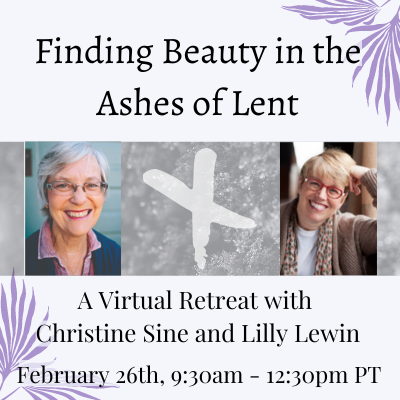 Lent continues, the season is still full of possibility and promise. Are you finding ashes and desiring beauty? Now available as an online course, this virtual retreat will help you to lay out your garment of lament and put on your garment of praise. Gather your joys and release your grief with Christine Sine and Lilly Lewin! Click here for more info!
Lent continues, the season is still full of possibility and promise. Are you finding ashes and desiring beauty? Now available as an online course, this virtual retreat will help you to lay out your garment of lament and put on your garment of praise. Gather your joys and release your grief with Christine Sine and Lilly Lewin! Click here for more info!
A contemplative service with music in the spirit of Taizé. Carrie Grace Littauer, prayer leader, with music by Kester Limner and Andy Myers.
Thank you for praying with us!
Permission to podcast/stream the music in this service obtained from One License with license #A-710-756.
“Što Oko Ne Vidje” (What No Eye has Seen) – Taizé song
By the Taizé community, copyright 2010, all rights reserved by GIA/Les Presses de Taizé
“Christ Be With Me” (Prayer of St. Patrick)
Text from the Lorica, or the Prayer of St. Patrick
Song by Ruth Cunningham, used with permission. All rights reserved.
YouTube :@ruthreid
Instagram: @ruthreid11
“By The Mark”
Written by Gillian Welch and David Rawlings
“O the Deep, Deep Love of Jesus”
Public domain hymn, arrangement by Kester Limner, shared under the Creative Commons License, Attribution (CC-BY)
Service readings:
John 20:19-31
“Living the questions” excerpt from Rainer Maria Rilke, “Rilke’s Letters on Love”
“The mother can lay her child tenderly to her breast, but our tender Mother Jesus can lead us easily into his blessed breast through his sweet open side, and show us there a part of the godhead and of the joys of heaven, with inner certainty of endless bliss.” — Julian of Norwich
Adapted prayer from Jan Richardson’s blog “The Painted Prayerbook”
by Carol Dixon
Featured photo by Samuel McGarrigle from Unsplash
Holy Week is a time when we remember Jesus’ journey to the Cross and his suffering and death and immerse ourselves in the story. We begin with a prayer.
Prayer: (by Rachel Poolman, St Cuthbert’s Holy Island)
We turn to you O God and find you already coming to meet us,
You inhabit our hopes and dreams with creative love,
You hold our battered lives in your scarred hands,
and catch us up from our troubles and fears
to dance towards fullness of life.
We meet you Saviour God, life giver, heart changer, breath taker.
Sustain us, heal us, renew us, we pray, this day and always. Amen
Hymn: Beneath the Cross of Jesus
Introduction: A few years ago I was on a retreat where we were invited to meditate on some icons and reflect on a character who was present at the crucifixion. I have reproduced some of the icons and they are each followed by a Meditations imagining what the different people might have thought. As you read the meditation, I invite you to look at the icon and think about the person who is telling their story. Each reflection is followed by a short silence and some music leading into the next meditation.
Reading: Matthew 27
54 When the centurion and those with him who were guarding Jesus saw the earthquake and all that had happened, they were terrified. ‘Surely this man was the Son of God!’ he said. [Matt 27: 54]
Song: Father, Forgive them by Sheila Hamil
Meditation 1 The Centurion
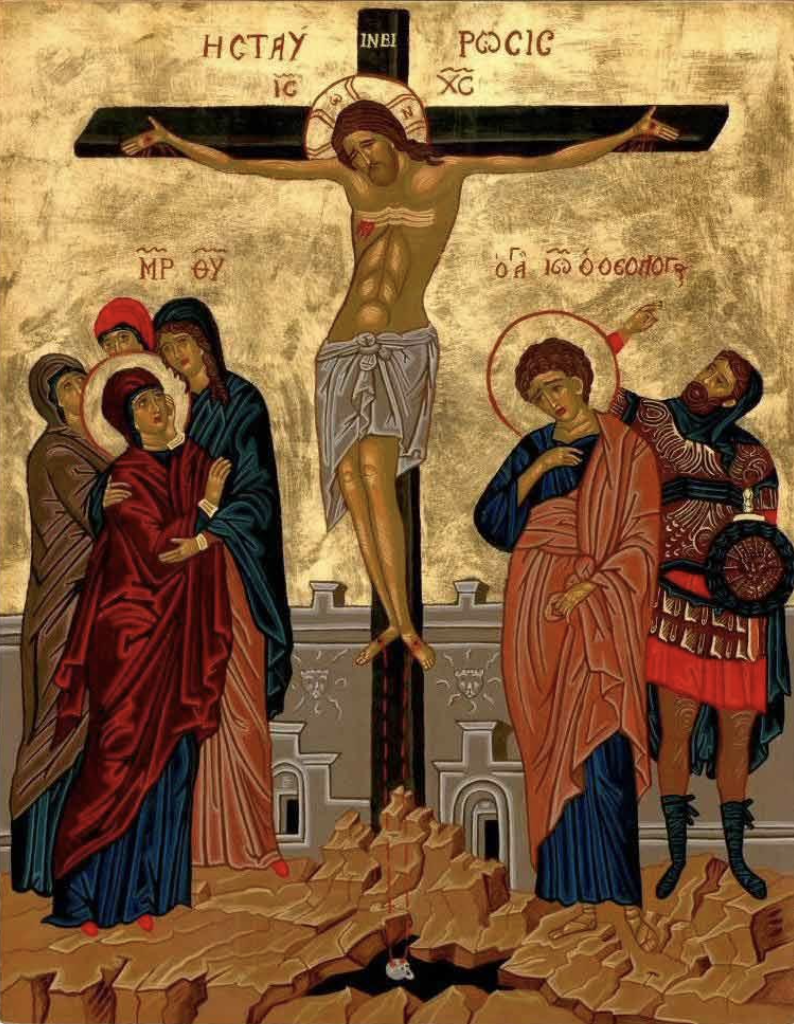
© Olga Christine
The Centurion
I never recognised him – can you believe that?
The man who healed my servant all those years ago –
was it only three? – in Capurnaum;
who gave the order, like I give orders
every day, and the boy was saved.
Here, on Skull Hill, I gave another order;
nails were hammered through flesh
and our detachment strung the three of them up.
The lads settled down to their dicing
to while away the waiting time – always the worst part.
I didn’t join in. Who wants to win
a sweat-stained bundle of peasants’ clothes?
Instead I stood and watched the small crowd
gathered near his Cross – no trouble-makers here,
just a group of broken-hearted relatives and friends
keeping a last vigil by his side,
while the sky darkened at the sun’s eclipse.
It reminded me of descending into the darkness
of the Mithraum at my initiation rite
when, as a young soldier, proud to wear
the uniform of Rome, I had been spattered
by the blood of the sacrificial bull –
hot, sticky – the stench stayed with me for days,
a sign of salvation, they said, though nothing changed.
Yet here, as his blood spurted from his pierced side,
something happened – I’m still not sure what;
life goes on the same as usual – orders given
and received; but somehow, by HIS blood,
I am…. different – healed.
Surely this man was the Son of God.
©Carol Dixon
SILENCE……
Music: My song is love unknown
My song is love unknown, my saviour’s love to me, Love to the loveless known, that I might lovely be.
O who am I that for my sake, My Lord should take frail flesh and die?
He came from his blest throne, salvation to bestow; but men made strange &none the longed-for Christ would know.
But, O my friend, my friend indeed, who at my need his life did spend.
Reading:
‘Jesus saw his mother and the disciple whom he loved standing beside her.’ [John 19: 26]
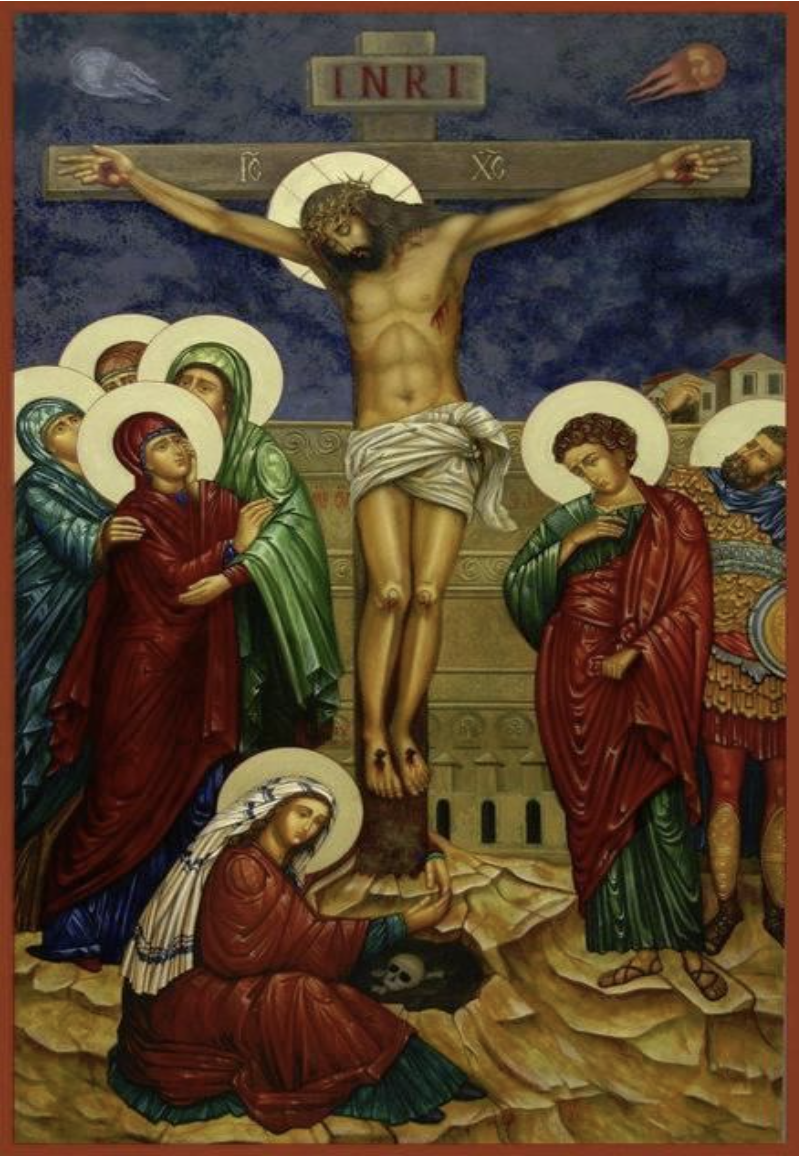
© Ann Chapin Fine Art America (Used with permission)
Meditation 2 The Beloved Disciple
I suppose I always knew
it would be up to me,
I had ‘friends in high places’ see
which was how I got Simon Peter
past the doorkeeper last night
and into the courtyard at Jesus’ trial.
Then when the women decided
they had to go with Jesus’ mother
to the Cross, I was the obvious choice
to escort them – there was no way
women could go out unaccompanied.
It was totally inappropriate for a woman
to venture anywhere alone,
far less to a crucifixion.
Not that Mary Magdalene bothered
with all that; she was never one
for convention, or worrying what others said.
It was safest for me to go too.
I was the youngest, less threat
to the Roman authorities.
Also I went out of love –
‘The beloved disciple’ they called me.
I suppose Jesus always had a soft spot
for me, despite my nickname
‘Boanerges’, the name he gave us,
‘Sons of thunder’, though
in truth my elder brother James
was always the fiery one, I just
tagged along and did what he did.
It was hard to be here, at the foot
of the Cross, watching my dear Master
stretched in agony above us.
I hoped – prayed – when the earthquake
shook the ground that he would
come crashing down, freed
from the cruel nails, so we could save him.
but instead, through all his suffering
he seems as if he is saving us.
I don’t understand how, or why.
Maybe when this darkness lifts
all will become clear.
But wait. Jesus is saying something.
He is looking at his mother, then
he looks at me. Such a look of love
I cannot bear it. One final request:
‘Son, here is your mother’. ‘Of course’ ,
I want to shout to him, ‘Of course I will
love her as my own, as you loved me,
your beloved disciple… and I love you,
my loving Lord.’ © Carol Dixon
Music: Hail true body (Sheila Hamil)
Meditation 3 The Mother
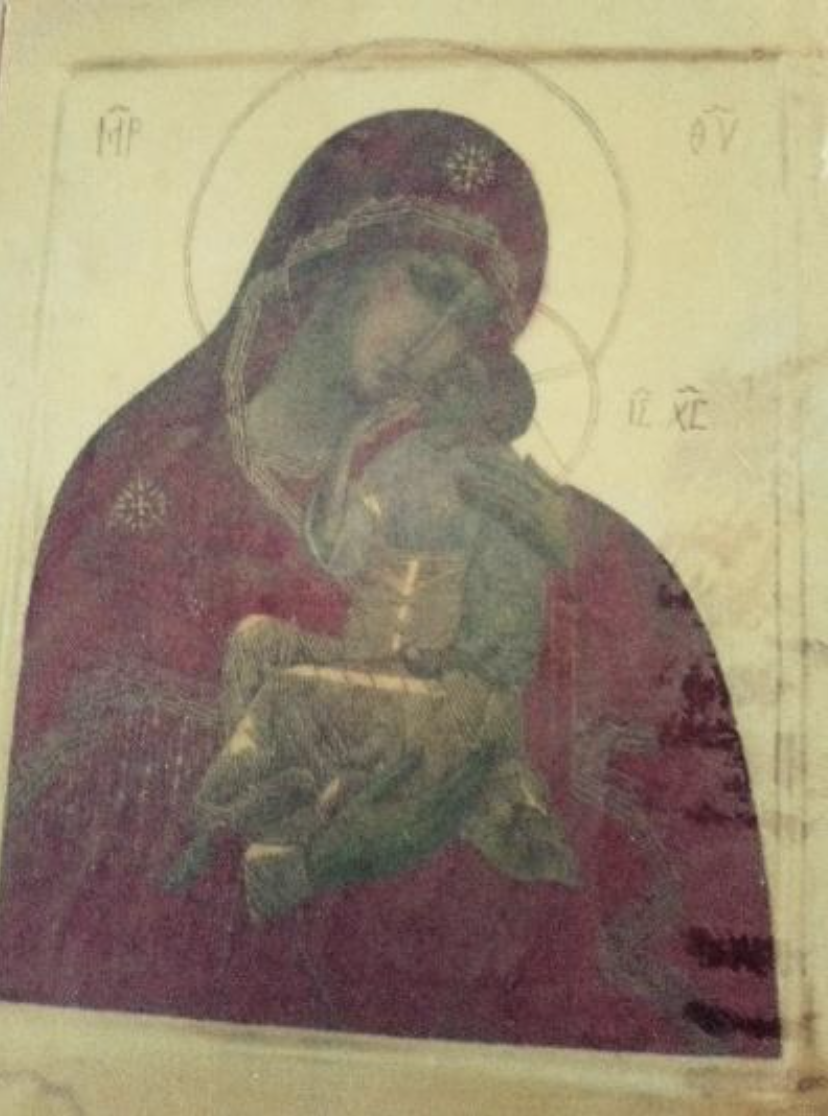
photo by Carol Dixon
She looked at him
and saw that he was dying,
and rebelled against
the futility of it all.
Already he seemed
so far away from her,
like a stranger, almost.
She had known him
little more than
thirty years, such
a short time really
in the eons of eternity.
The emptiness which filled
her heart was replaced
by a kind of repugnance
as she looked at him –
a shadow of his former self –
his bleeding, sweating body
racked with pain; it was
revolting, repellent, disgusting.
Where was the glory
and majesty of Death
which people talked about?
She shut her eyes
to try and efface the horror
of it all……. and saw
the stable and the blood
upon the straw, recalled
the stench of sweat
and warm animals –
felt their hot breath and the pain
of the child fighting
its way out of her womb,
from the darkness
into Light!
Looking up, she caught his eye
and, meeting his tranquil gaze,
understood he knew that they
had travailed this journey before.
The ghastly gore of death
was no different to that of birth.
The glory came afterwards…..
‘It is accomplished!’ he cried to the world;
and she smiled, through the mists of her tears.
© Carol Dixon
SHORT SILENCE…
HYMN: O sacred head sore wounded
Reading: Standing by the cross of Jesus were his mother and his mother’s sister, Mary the wife of Clopas, and Mary Magdalene [John 19: 25]
Meditation 4 – The sister of Mary
I didn’t want to be here, you know.
Here, at the crucifixion; but I had to come
because of his mother, my sister.
I had to be there for her.
Jesus was the joy of her heart, the apple of her eye,
her first born – never mind how he was conceived –
first born are always special in a way,
and he was, mark my words, he was;
so good at following in his father’s footsteps.
Then after Joseph died it all changed.
Oh he remained for a while as head of the household
but as soon as his brothers and sisters were able
to support their mother, he was off.
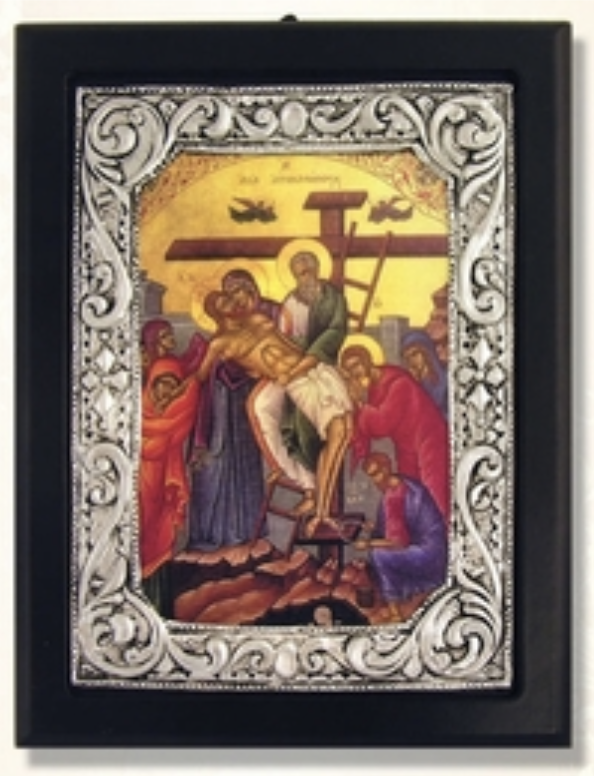
First of all he went to follow that wild cousin of his,
John (what a disappointment he must have been
to his elderly parents), the desert man,
living off locusts and wild honey,
just like one of those strange prophets, long ago.
But Jesus didn’t stay long with him.
No, he came back up north and soon
had quite a following himself – a mixed bunch
from fishermen to tax collectors, the riff raff
of society – with a few zealots thrown in.
So it’s little wonder he ended up here, really,
crucified between two criminals.
It shouldn’t have happened though – he wasn’t a rebel
well, not in that sense of the word.
He was good and kind and healed people,
helped whoever came to him in need.
And now here he is, in need of us
as we lower his battered body, and rest it
in his mother’s arms, for one last time
before we lay it in the borrowed tomb.
So that’s why I’m in this place
where I really don’t want to be, God knows,
I’m here for his mother, yet despite myself
I’ve become part of it too. © Carol Dixon
Prayer: During a time of quietness as you listen to the song ‘Embrace the world’ let us pray … for our own needs …and for the needs of our world…. laying all our burdens, worries, and need of healing at the foot of the Cross, leaving them in the care of our wounded Saviour who heals all our hurts and gives us his everlasting peace.
Song: Embrace the World – Words & Music Colin Dixon
Jesus, with arms outstretched, from your Cross you embrace the world.
Dying, you show us how to live for each other, forgetting ourselves.
Across the earth we see suffering, sisters, brothers, broken by strife;
You teach us, Lord, to love and care, so we learn to live your risen life.
Fighting and famine, hatred, bloodshed, war, earthquake, torture, fire, bomb and gun,
How much longer will we watch and wait till your will on earth is done?
Sharing food and healing hurts, helping poor and homeless too,
Sacrificing greed for power, and lust for wealth before we learn to follow you.
Throughout the world people profane your name, living in hatred instead of in love;
Send us your spirit of truth & grace, give strength for weakness, your power from above.
Jesus, with arms outstretched, from your Cross you embrace the world.
Dying, you show us how to live for each other, forgetting ourselves,
As you did Lord, when you were here. © Colin Dixon Easter 2001
Closing prayer [by Rachel Poolman, St Cuthbert’s Holy Island]
God lingers where others can only offer fleeting thought…..
God lingers with those labouring to bring new life into being
with those who grieve for love lost and hopes dashed……
God lingers with those who celebrate the gift of beauty in their midst,
with those who are lost in a tunnel of darkness with no end in sight….
This day within the ordinary and the extraordinary God lingers
breathing love, embracing despair, murmuring hope…..
God lingers with us and all creation this day, and all days, for evermore.
Hymn: When I survey the wondrous cross
Blessing: God’s peace, seen in Jesus, our crucified and risen Lord, be upon you this day and always. Amen.
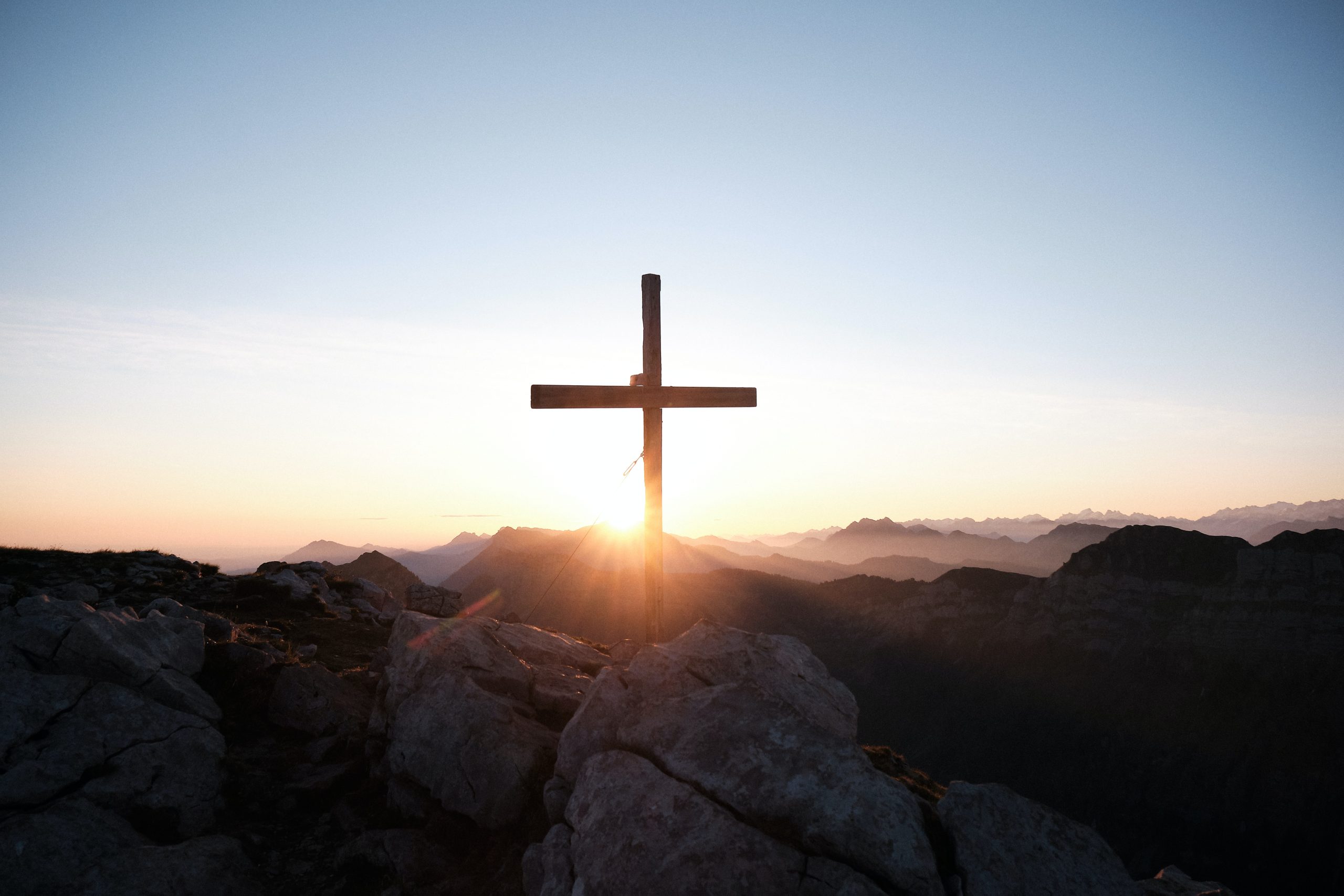
Photo by Yannick Pulver on Unsplash
 Lent continues, the season is still full of possibility and promise. Are you finding ashes and desiring beauty? Now available as an online course, this virtual retreat will help you to lay out your garment of lament and put on your garment of praise. Gather your joys and release your grief with Christine Sine and Lilly Lewin! Click here for more info!
Lent continues, the season is still full of possibility and promise. Are you finding ashes and desiring beauty? Now available as an online course, this virtual retreat will help you to lay out your garment of lament and put on your garment of praise. Gather your joys and release your grief with Christine Sine and Lilly Lewin! Click here for more info!
If we think of the church year as a whole, there are four Sundays to prepare for Christmas—the first Sunday of Advent, the second Sunday of Advent, and so on. There are six Sundays to prepare for Easter, yet they’re not the first Sunday of Lent or the second Sunday of Lent. Instead, they’re the first Sunday in the season of Lent, the second Sunday in the season of Lent, and so on.
Now that might seem like a very small point of grammar that only a writer could love. But pastor and professor Wayne Brouwer says:
This is an important fact to note. In Advent, Christmas, Easter, and Pentecost, the Sundays belong to the season. They are Sunday of. . . .But during Lent, the Sundays are not part of Lent. The forty days of the season flow around the Sundays, calling us to share the journey of suffering with Jesus. The Sundays themselves, however, are islands of mercy, reminding us that Jesus is alive and forever victorious.
I’ve never heard the Sundays during Lent described in just this way before, but it’s a lovely image and a reminder that “Jesus is alive and forever victorious.”
That goes very well with Psalm 32. “You are my hiding place,” says the psalmist (v. 7). That’s our “island of mercy.” God is our island of mercy, our hiding place.
For a bird, a hiding place might be a bird house. For a bear, a hiding place might be a cave. In biblical Hebrew, the word for “hiding place” comes from the root word “shelter.” So a tent or a house or some other kind of shelter could be a kind of hiding place. In Genesis, when Adam and Eve tried to hide from God, they used trees as their hiding place.
God had placed Adam and Eve in the garden and given them the fruit of every tree—except for one. So of course, they just had to eat from that one tree. But then they became so ashamed because they had broken their relationship with God. They didn’t want God to know about their sin, so they tried to find a hiding place among the trees (Genesis 3:8).
The psalmist also tried to hide his sin from God. Instead of confessing, the psalmist tried to cover it up, to hide it by saying nothing. But that strategy backfired: “When I kept silent, my bones wasted away through my groaning all day long” (v. 3).
The psalm doesn’t give any details, but if these words were written by King David as some people believe, the background to this psalm might have been David’s sin of calling for Bathsheba and taking advantage of her, arranging for her husband to be killed, and then trying to cover up the abuse and murder that he had committed. If the psalm were written by someone in King David’s court—or simply in the style of King David—as others believe, the background to this psalm might have been cheating someone else out of a court appointment, or stealing from the treasury, or any number of other things.
Without specific details, the psalm remains open-ended, and perhaps that allows us to identify more easily with the psalmist. If the details were spelled out, we might say, “Oh that’s not me. I haven’t tried to get anyone killed. I haven’t stolen anything from the treasury.” But the kind of sin is not the main point here. Instead, the psalm focuses on what happens when we try to hide from God.
The psalmist tried to hide, and inside it was eating away at him. He suffered physically—his bones ached, he felt weak. He suffered emotionally and spiritually: “For day and night your hand was heavy on me; my strength was sapped as in the heat of summer” (v. 4).
But finally, instead of trying to hide from God, the psalmist came to his senses:
Then I acknowledged my sin to you and did not cover up my iniquity. I said, “I will confess my transgressions to the Lord.” And you forgave the guilt of my sin (v. 5).
The psalmist confessed, and God forgave. At times, we may have a hard time believing it’s that simple. We may act as if it’s much more complicated than that, as if there are a few more steps in between—like: I confessed, I felt terrible for years on end, I told myself I would never amount to anything, I took it out on my spouse and kids, and never really got over it anyway—and then God forgave me. But that’s not what Psalm 32 says. It says very simply, I will confess—and God forgave.
On a practical level, there may still be some things we need to do. If we’ve stolen from the treasury, we need to give the money back. If we’ve told a lie about someone else, we need to tell the truth. God forgives us and calls us to live a new life.
For the psalmist, that new life meant moving beyond silence to confession, and then moving beyond confession to thanksgiving and praise to God:
You are my hiding place;
you will protect me from trouble
and surround me with songs of deliverance (v. 7).
The psalmist’s confession of sin is described in a single verse (v.5), and the celebration that follows is much longer (vv. 6-11).
Before the word of confession in v. 5, the first part of Psalm 32 uses a number of different words to describe the psalmist’s transgressions, sins, iniquity, guilt. But after the confession, in the rest of the psalm, those words completely disappear. God forgives, and the sin—the transgression, the iniquity, whatever words are used to describe it—all of that is gone as sin gives way to celebration over God’s forgiveness.
Instead of hiding from God, the psalmist came to understand what it meant to hide in God. So may we also say today, “You are my hiding place” (v. 7). You are my God in whom I trust. Whatever we have done or not done in this life, whatever our troubles and joys, God is our hiding place, our island of mercy in this season of Lent and every day.
~ Goodfellow
Explore the wonderful ways that God and God’s story are revealed through the rhythms of planting, growing, and harvesting. Spiritual insights, practical advice for organic backyard gardeners, and time for reflection will enrich and deepen faith–sign up for 180 days of access to work at your own pace and get ready for your gardening season.
by Christine Sine
It’s Holy week. Yesterday many of us progressed around the church with our palm fronds singing hosanna, reminding ourselves of Jesus’ triumphal entry into Jerusalem. Through the rest of the week we walk with Jesus towards the cross through what I have in previous years called the most subversive week of Jesus’ life. In the past I have said that Jesus’ walk through Holy week begins with this triumphal entry and ends at the cross.
Today as I helped plant our spring vegetables, I was reminded that it does not really end at the Cross at all, but in the new life of the kingdom. Jesus triumphant entry into Jerusalem was because he had raised Lazarus from the dead. (John 12:9-11. It was because of Jesus’ proclamation of a new way of life, a life in which death was conquered, that they followed him. It is very easy for us to get stuck at the cross, to focus our attention on Jesus’ death and allow the true wonder of Easter to escape us.
Unless a grain of wheat is planted in the ground and dies, it remains a solitary seed. But when it is planted, it produces in death a great harvest. (John 12:24, The Voice)
Death gives birth to life. I don’t plant my seeds and then forget about them.
Are we stuck at the cross in the throes of death when God wants us to burst out of the tomb into new life? Are we stuck at the cross, unaware that the new life of the kingdom is bursting out around us? Are we stuck at the cross unconsciously condoning violence as an acceptable part of our Christian way of life? I thought about this as I read about yet another horrific school shooting this week and saw the incredible resistance to restricting these of assault weapons even amongst Christians.
In their fascinating book Saving Paradise How Christianity Traded Love of This World for Crucifixion and Empire Rita Nakashima Brock and Rebecca Ann Parker tell us: “It took Jesus a thousand years to die.” Brock and Parker travelled the Mediterranean looking for early Christian art that depicted the crucifixion. Instead they found wonderful images of Christ as a living presence healing, restoration and resurrection in a garden of incredible beauty. If the cross was portrayed it was always with Jesus in front of it in his risen glory welcoming the repentant and reconciled into the kingdom. These are images of paradise- paradise in this world, permeated and blessed by the presence of God.
The authors contend that images of Christ on the cross as the central focus of Christian faith grew out of the sanctioning of war and violence as a holy pursuit. The earliest images of Christ on the cross as the central focus they found appeared in the 10th century in northern Europe and proliferated throughout the Middle Ages. What brought about this change? Brock and Parker believe that it was Charlemagne who began the trend as he spread Christianity by war and violence, subduing the Saxons and forcing them to become Christians. In fact it was in these Saxon churches that the earliest images of crucifixion are found.
When I read this, I was reminded of this of a visit Tom and I made to the Vatican museum many years ago. We walked through room after room of art depicting Jesus on the cross. Much of it with very graphic violence, and often very depressing. Then we went down to the basement, where a hidden away room displayed sarcophagus art from the early church. It was art of resurrection, of healing of celebration and freedom.
Jesus endured the cross, he didn’t revel in it as we sometimes seem to. He looked ahead to the joy of a new world breaking into ours, a world of beauty, healing, and restoration of both people and creation.
Don’t get me wrong. I love to walk the stations of the cross on Good Friday. I need this experience to remind myself of the agony that Jesus went through in order to break the bonds of sin to bring us all to freedom, but I don’t want to stop there. I don’t want to live there in the heartbreak and despair.
The joy of Easter is not Good Friday, but Easter Sunday. This is the end of Jesus’ subversive walk. This is the place we are meant to live. Not on the cross, not in the darkness of the tomb but in the liberating light of God’s new world.
I want to enter into the new life of God, and bring that newness into the lives of those around. I want to see it burst forth into the creation that is still waiting with groaning, looking forward to the day when it will join God’s children in glorious freedom from death and decay. (Romans 8:21, 22)
Easter Sunday ushers in 50 days of celebration of resurrection life but for most of us by the time the sun sets on Easter Sunday we seem to have forgotten about it completely. We are back to life as usual, just as the disciples were.
In Acts 10:39-42 we read
“And we apostles are witnesses of all he did throughout Judea and in Jerusalem. They put him to death by hanging him on a cross, but God raised him to life on the third day. Then God allowed him to appear, not to the general public, but to us whom God had chosen in advance to be his witnesses. We were those who ate and drank with him after he rose from the dead. And he ordered us to preach everywhere and to testify that Jesus is the one appointed by God to be the judge of all—the living and the dead.
The Cross and the empty tomb are not the important events of Easter, the living presence of God in the resurrected Jesus are. It wasn’t the empty tomb that transformed the disciples and the women who followed Jesus, it was his appearing to them, eating with them, interpreting the scriptures for them. They met the risen Christ in the 50 days after Easter and it changed their lives so that they went out not just talking about the things Jesus did, but living them.
What Is Your Response?
My challenge to all of us today is: Will we hang around long enough to enter into the full joy of the risen Saviour? Will we hang around long enough to encounter the living Christ? When Easter Sunday is over will we be back to life as usual or are we ready to encounter Jesus over the next 50 days, which is the true season of Easter, and have our lives radically changed and redirected as a result?
Watch the video below where Lilly and I talk about other aspects of the kingdom and how we think it can be lived out by all of us today. Reflect on how during this Holy week you could prepare yourself to live out the resurrection in the coming days.
 Lent continues, the season is still full of possibility and promise. Are you finding ashes and desiring beauty? Now available as an online course, this virtual retreat will help you to lay out your garment of lament and put on your garment of praise. Gather your joys and release your grief with Christine Sine and Lilly Lewin! Click here for more info!
Lent continues, the season is still full of possibility and promise. Are you finding ashes and desiring beauty? Now available as an online course, this virtual retreat will help you to lay out your garment of lament and put on your garment of praise. Gather your joys and release your grief with Christine Sine and Lilly Lewin! Click here for more info!
A contemplative service with music in the spirit of Taizé. Carrie Grace Littauer, prayer leader, with music by Kester Limner and Andy Myers.
Thank you for praying with us at St Andrews Episcopal Church in Seattle. !
Permission to podcast/stream the music in this service obtained from One License with license #A-710-756.
“Bless the Lord My Soul”, “Magnificat”, “The Kingdom of God”
Copyright and all rights reserved by GIA/Les Presses de Taizé
“Were You There” (When They Crucified My Lord) – folk arrangement
Traditional Black American Spiritual, Arrangement by Kester Limner, shared under the Creative Commons license, attribution (CC-BY)
Service readings:
Psalm 118:19-27; Matthew 21:1-11
Excerpt from the discourse “On the Palm Branches” by St. Andrew of Crete:
“Let us run to accompany him as he hastens toward his passion, and imitate those who met him then, not by covering his path with garments, olive branches or palms, but by doing all we can to prostrate ourselves before him by being humble and by trying to live as he would wish. Then we shall be able to receive the Word at his coming, and God, whom no limits can contain, will be within us.
… So let us spread before his feet, not garments or soulless olive branches, which delight the eye for a few hours and then wither, but ourselves, clothed in his grace, or rather, clothed completely in him. We who have been baptized into Christ must ourselves be the garments that we spread before him…. Let our souls take the place of the welcoming branches as we join today in the children’s holy song: ‘Blessed is he who comes in the name of the Lord. Blessed is the king of Israel.'”
by Sheila Hamil
I’d like to share a light-hearted drama recording with you, which I wrote some years ago for family worship, in order to set the scene, and to focus upon Jesus’ entry into Jerusalem on Palm Sunday. It’s based upon readings, from both St Matthew and St John’s gospels, and is entitled ‘Radio Jerusalem’.
Kevin Archer a friend of mine, at LCB radio, North Northumberland, helped provide most of the voices.
The Palm Sunday script can be accessed here.

Do you ever remember being given a thin red cellophane fish as a child, which when placed upon your palm, moved and changed shape, supposedly to reveal your true character? Well this wasn’t magic or fortune telling, there was a very simple scientific solution behind this trick, to do with a chemical called,‘ sodium polyacrylate’, a salt, which could grab and absorb moisture, such as the sweat on your hands; and it was this process which changed the shape of the fish.
But we were all utterly fascinated by this, as young children.
If the fish moved its head you were a jealous person
If it moved its tail: you were indifferent
If it moves its head and tail: you were in love
If it curled up entirely you were said to be passionate
But if its sides curled: you were fickle! Now there a strange word, which we’ll be looking at today!
Of course, if the fish didn’t move at all: you were either tired, or dead!
What does fickle mean then?
Let me tell you about two friends in Junior school, who were much closer to each other, than they were to me, as they travelled home together, and so quite often I didn’t know whether they were going to be my friends, or not. One of them wasn’t speaking to me for some reason, so I brought in a photo of her pop idol, Elvis Presley, and I placed it inside her desk. When she came into the classroom and opened the lid; she asked, “Who put this picture of Elvis in my desk.” I put my hand up, and replied, “I did!”
“Right,” she said, “we’re friends again!”
I was ever so grateful!
Fickle means to be changeable, unreliable, forever blowing hot and cold.
Fickle is a word that sums up the very nature of the crowd that welcomed Jesus as he rode into Jerusalem, on the day we now call Palm Sunday. The crowds that day were jubilant and went wild with excitement, that at last their King had come, and was declaring himself openly, as he processed into the city in view of everyone there. But by the end of that week, they were quite the opposite, demanding the death penalty for him, crying out ‘Crucify him!
Fickle indeed!
On the day of Jesus’ entry into Jerusalem that day, the city was crowded with pilgrims; all geared up and ready to celebrate the greatest of their national festivals; it was Passover week; and every adult male within 20 miles of Jerusalem was expected to be there, as well as Jews from many other parts of the world. And what a welcome they gave Jesus, as he rode in through the eastern gate, on a donkey, on a colt that had never been ridden before, according to St Matthew.
There’s a sacred symbolism here that the crowd may not have understood at the time, for the Ark of the Covenant, sacred as it was, had been carried on a cart which had never been used before, (1 Sam 6:7) and animals for the holy sacrifice were those that had never before been yoked. (Numbers 19.2 & Deuteronomy 21.3)
Jesus had planned his move, it wasn’t a spur of the moment decision; the ass and foal had already been arranged, and were collected, by means of a password by his disciples.
And so Jesus entered central stage, brave and defiant, a deliberate challenge to the religious elders.
He came asserting his claim as God’s Anointed one; the Messiah. making it very obvious, ‘This is who I am!’ Prophets in those days illustrated the truth of their words with drama!
He came proclaiming peace, riding a humble donkey, not a warhorse, fulfilling words of the prophet Zechariah, who lived 500 years before:
“Rejoice greatly, O daughter of Zion!
Shout, O daughter of Jerusalem!
Behold, your King is coming to you;
He is just and having salvation,
Lowly and riding on a donkey,
A colt, the foal of a donkey.
But as far as the onlookers were concerned:
Here was the one who had come to rally the troops, and put the Romans to flight! Run them out of town or even kill them. This day heralded their ‘High Noon’, their ‘Crunch Time’! Their king had come in full view of the authorities. His timing was perfect and augured well! Passover! The time when freedom had come to the Hebrew slaves, releasing them from the clutches of the Egyptians who had ruled them for so long. Here was hope once more of victory over the oppressor;
Here was the one who would bring in God’s kingdom at last; and from what they had heard of the miracles Jesus had performed, the people he’d had healed, and brought back to life, from what they had heard about him being able to fire the people up, and feed many people with a minimum of food, Jesus was surely the one they had been waiting for! And what a leader he would make! A king just like David.
Here was one just like their former super hero Judas Maccabees, who had cleansed and restored the temple to its full glory after a Syrian King, called Antiochus Epiphanes, had desecrated it with pigs’ flesh, and erected idols there in order to honour Zeus! People had carried palm branches, and cried out their support even then, 200 years before!
So many people in the crowd were PASSIONATE, believing that the Romans would now be driven out.
(If they’d had red cellophane fish on their hands they would have been curled up entirely!)
But not all were as excited; watching the proceedings, at some distance away, were those who were SCEPTICAL, INDIFFERENT, ANGRY, AND FEARFUL, perhaps even JEALOUS: a whole range of emotions which would have caused red cellophane fish to leap off their hands in alarm!
For looking on were those who saw Jesus as an imposter and troublemaker.
They were terrified that all this chaos and commotion might cause the Romans to move in against their people and ransack the temple. (Had Jesus entered the city quietly, unnoticed, he might not have died that week, but in every way he surrendered himself to God’s will.)
Caiaphas their High priest told his fellow men in no uncertain terms:,
“Don’t you realise, that it’s better for you that one man should die for the people than for the whole nation to be destroyed.” A prophetic statement indeed!
In other words, ‘Take away their leader, rid ourselves of him, and all this disruption will come to nothing! There’ll be no bloodshed, other than his!”’
Jesus knew what was in store; he knew his fate from ancient writings which foretold that he would suffer and die, and that he would rise again. Jesus had told his followers this, but they either hadn’t understood this, or they refused to believe it possible.
By the end of the week, it seems that no-one stood by him.
Those closest to him were heartbroken, because in the heat of the moment, at his arrest, they had run away and deserted him.
There must have been some who had cried out his name amidst the crowd that yelled “Crucify him!”, but they would have been shouted down.
No-one acted on his behalf, until after he had died, but many grieved because they loved him, and had been at the receiving end of his love, his kindness and compassion.
There are still many who close their doors and their gates to him today, just as the Ottoman Turks did in 1530 AD when they walled up the Eastern Gate. There are those who refused to believe Jesus was the Messiah, and still await his coming.
There are those of us today who long for his return.
The real question is:-
Will we be ready for him when he does return or will our doors be firmly closed? Will we prove to be loyal, steadfast friends until he returns, or will we blow hot and cold depending upon the world circumstances around us? Which?
Faithful or Fickle?
 Looking for hospitality inspiration? We have an entire resource page dedicated to hospitality. Find recipes and reflections on numerous hospitality topics, including Celtic hospitality, prayers, and liturgies. Click on Hospitality for more!
Looking for hospitality inspiration? We have an entire resource page dedicated to hospitality. Find recipes and reflections on numerous hospitality topics, including Celtic hospitality, prayers, and liturgies. Click on Hospitality for more!
As an Amazon Associate, I receive a small amount for purchases made through appropriate links.
Thank you for supporting Godspace in this way.
When referencing or quoting Godspace Light, please be sure to include the Author (Christine Sine unless otherwise noted), the Title of the article or resource, the Source link where appropriate, and ©Godspacelight.com. Thank you!

